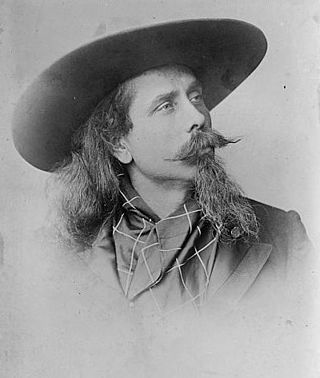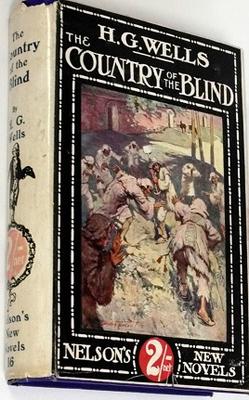
James Graham Ballard was an English novelist and short-story writer, satirist and essayist known for psychologically provocative works of fiction that explore the relations between human psychology, technology, sex and mass media. Ballard first became associated with New Wave science fiction for post-apocalyptic novels such as The Drowned World (1962). He later courted controversy with the short-story collection The Atrocity Exhibition (1970), which includes the 1968 story "Why I Want to Fuck Ronald Reagan", and later the novel Crash (1973), a story about car-crash fetishists.

Sir Hiram Stevens Maxim was an American-born British inventor best known as the creator of the first automatic machine gun, the Maxim gun. Maxim held patents on numerous mechanical devices such as hair-curling irons, a mousetrap, and steam pumps. Maxim laid claim to inventing the lightbulb.

Samuel Franklin Cowdery was a Wild West showman and early pioneer of manned flight.

The Time Ships is a 1995 hard science fiction novel by Stephen Baxter. A canonical sequel to the 1895 novella The Time Machine by H. G. Wells, it was officially authorized by the Wells estate to mark the centenary of the original's publication. The Time Ships won critical acclaim. It won the John W. Campbell Memorial Award and the Philip K. Dick Award in 1996, as well as the British Science Fiction Association Award in 1995. It was also nominated for the Hugo, Clarke and Locus Awards in 1996.
Lee Ulrich Eyerly was an American civil aviation pioneer and amusement ride manufacturer. Eyerly helped found Salem Oregon's McNary Field, built the Flying E Ranch in Wickenburg, Arizona and invented several amusement park rides including the Loop-O-Plane, the Roll-O-Plane the Fly-O-Plane the Rock-O-Plane, and the Octopus.

The Short Empire was a medium-range four-engined monoplane flying boat, designed and developed by Short Brothers during the 1930s to meet the requirements of the growing commercial airline sector, with a particular emphasis upon its usefulness upon the core routes that served the United Kingdom. It was developed and manufactured in parallel with the Short Sunderland maritime patrol bomber, which went on to serve in the Second World War; a further derivative that was later developed was the piggy-back Short Mayo Composite.

Worcester Regional Airport is three miles (5 km) west of Worcester, in Worcester County, Massachusetts, United States. The main property lies within municipalities of Worcester and Leicester, with supporting facilities in Paxton. Once owned by the City of Worcester, the airport has been owned and operated by the Massachusetts Port Authority (Massport) since June 2010.
Dean Charles Ing was an American author, who usually wrote in the science fiction and techno-thriller genres. His novel The Ransom of Black Stealth One (1989) was a New York Times bestseller. He wrote more than 30 novels, and co-authored novels with his friends Jerry Pournelle, S. M. Stirling, and Leik Myrabo. Following the death of science fiction author Mack Reynolds in 1983, Ing was asked to finish several of Reynolds' uncompleted manuscripts.
"The Chronic Argonauts" is an 1888 short story by the British science-fiction writer H. G. Wells. It features an inventor who builds a time machine and travels in time using it, and it pre-dates Wells's best-selling 1895 time travel novel The Time Machine by seven years.

Worcester Park is a suburban town in South West London, England. It lies in the London boroughs of Sutton and Kingston, and partly in the Surrey borough of Epsom and Ewell. The area is 10 miles (16 km) southwest of Charing Cross. The suburb's population was 16,031 at the time of the 2001 census. The suburb comprises the Worcester Park ward, an electoral area of the London Borough of Sutton with a population in 2011 of 11,655, as well as the Cuddington ward, an electoral area of Epsom and Ewell, which had a population of 5,791 at the time of the 2001 census.

Tripoli International Airport is a closed international airport built to serve Tripoli, the capital city of Libya. The airport is located in the area of Qasr bin Ghashir, 24 kilometres (15 mi) from central Tripoli. It used to be the hub for Libyan Airlines, Afriqiyah Airways, and Buraq Air.

The Canadair North Star is a 1940s Canadian development, for Trans-Canada Air Lines (TCA), of the Douglas DC-4. Instead of radial piston engines used by the Douglas design, Canadair used Rolls-Royce Merlin V12 engines to achieve a higher cruising speed of 325 mph (523 km/h) compared with the 246 mph (396 km/h) of the standard DC-4. Requested by TCA in 1944, the prototype flew on 15 July 1946. The type was used by various airlines and by the Royal Canadian Air Force (RCAF). It proved to be reliable but noisy when in service through the 1950s and into the 1960s. Some examples continued to fly into the 1970s, converted to cargo aircraft.

The Country of the Blind and Other Stories is a collection of thirty-three fantasy and science fiction short stories written by the English author H. G. Wells between 1894 and 1909. It was first published by Thomas Nelson and Sons in 1911. All the stories had first been published in various weekly and monthly periodicals. Twenty-seven of the stories had also been previously published in five earlier story collections by Wells.

H. G. Wells was a prolific writer of both fiction and non-fiction. His writing career spanned more than sixty years, and his early science fiction novels earned him the title of "The Father of Science Fiction".

The Plattner Story and Others is a collection of seventeen short stories written by H. G. Wells. This volume was first published in March 1897 by Methuen & Co.

The 1911 Paris to Madrid air race was a three-stage international flying competition, the first of several European air races of that summer. The winner was French aviator Jules Védrines, although his win, along with the rest of the race, were overshadowed by a notorious fatal crash at takeoff.

"In the Abyss" is a short story by English writer H. G. Wells, first published in 1896 in Pearson's Magazine. It was included in The Plattner Story and Others, a collection of short stories by Wells first published in 1897. The story describes a journey to the ocean bed in a specially-designed metal sphere; the explorer within discovers a civilization of human-like creatures.

British Overseas Airways Corporation (BOAC) was the British state-owned airline created in 1939 by the merger of Imperial Airways and British Airways Ltd. It continued operating overseas services throughout World War II. After the passing of the Civil Aviation Act 1946, European and South American services passed to two further state-owned airlines, British European Airways (BEA) and British South American Airways (BSAA). BOAC absorbed BSAA in 1949, but BEA continued to operate British domestic and European routes for the next quarter century. The Civil Aviation Act 1971 merged BOAC and BEA, effective 31 March 1974, forming today's British Airways.
"The Sea Raiders" is a short story by H. G. Wells, first published in 1896 in The Weekly Sun Literary Supplement. It was included in The Plattner Story and Others, a collection of short stories by Wells published by Methuen & Co. in 1897. It was included in The Country of the Blind and Other Stories, a collection of short stories by Wells published by Thomas Nelson & Sons in 1911.
"The Plattner Story" is a short story by English writer H. G. Wells, first published in 1896 in The New Review. It was included in The Plattner Story and Others, a collection of short stories by Wells first published in 1897, and in The Country of the Blind and Other Stories, a collection of his short stories first published in 1911. In the story, a man recounts his experiences in a parallel world, which he speculates is some form of Afterlife.














